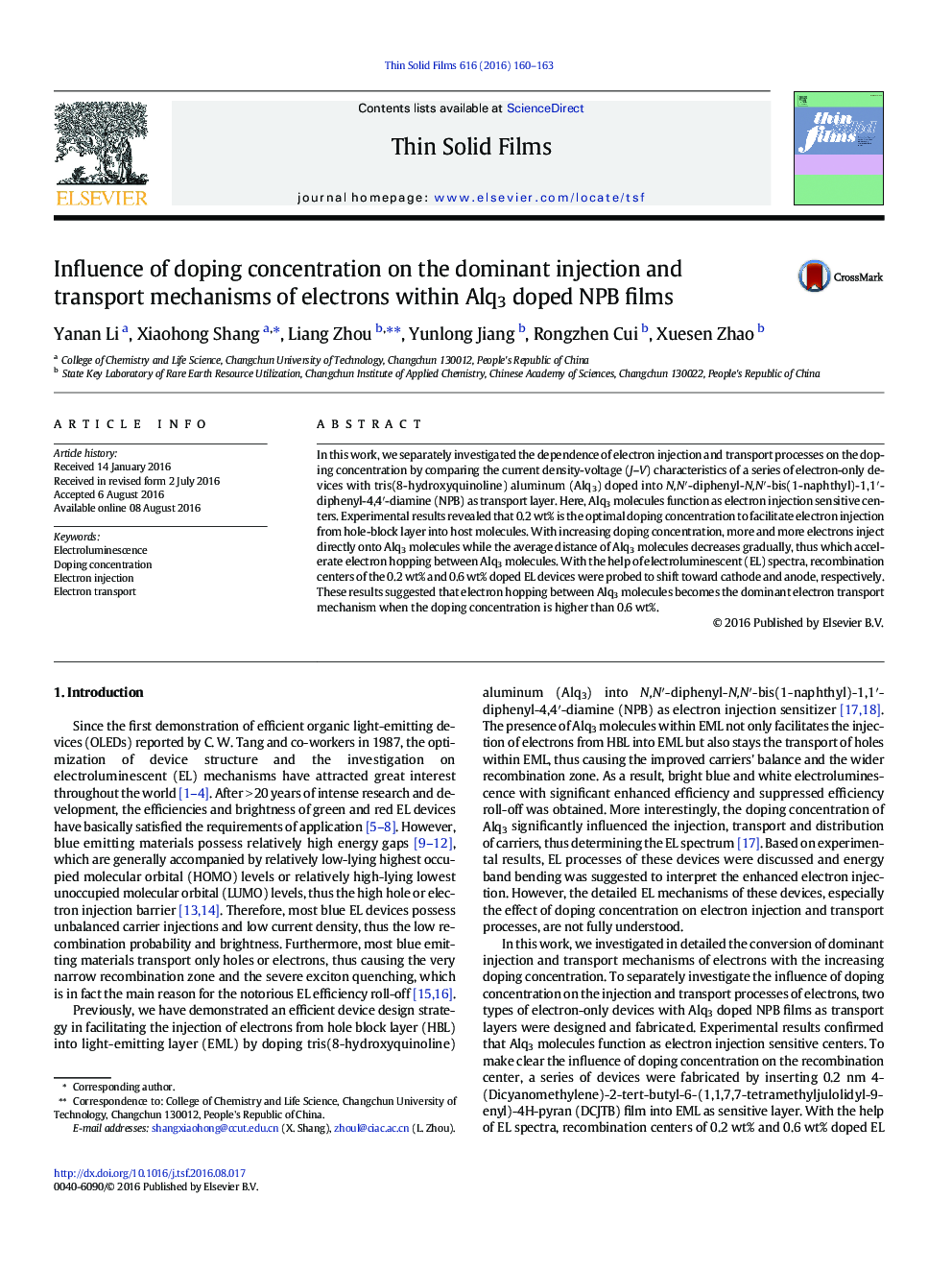| Article ID | Journal | Published Year | Pages | File Type |
|---|---|---|---|---|
| 1663748 | Thin Solid Films | 2016 | 4 Pages |
•Electron injection and transport processes in Alq3 doped NPB film were investigated.•Alq3 molecules were confirmed to function as electron injection sensitive centers.•0.2% is the optimal doping concentration of Alq3 to sensitize the injection of electrons.•Experimental results reveal the conversion of dominant electron transport mechanism.
In this work, we separately investigated the dependence of electron injection and transport processes on the doping concentration by comparing the current density-voltage (J–V) characteristics of a series of electron-only devices with tris(8-hydroxyquinoline) aluminum (Alq3) doped into N,N′-diphenyl-N,N′-bis(1-naphthyl)-1,1′-diphenyl-4,4′-diamine (NPB) as transport layer. Here, Alq3 molecules function as electron injection sensitive centers. Experimental results revealed that 0.2 wt% is the optimal doping concentration to facilitate electron injection from hole-block layer into host molecules. With increasing doping concentration, more and more electrons inject directly onto Alq3 molecules while the average distance of Alq3 molecules decreases gradually, thus which accelerate electron hopping between Alq3 molecules. With the help of electroluminescent (EL) spectra, recombination centers of the 0.2 wt% and 0.6 wt% doped EL devices were probed to shift toward cathode and anode, respectively. These results suggested that electron hopping between Alq3 molecules becomes the dominant electron transport mechanism when the doping concentration is higher than 0.6 wt%.
